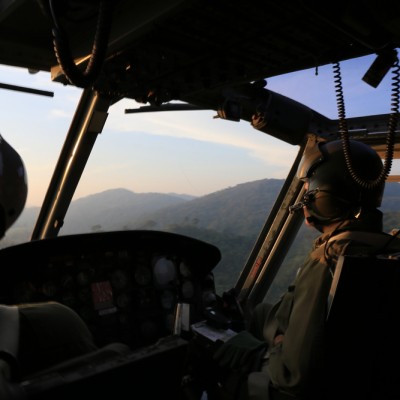
DO-178 Certification & Development
Custom Development and Certification of DO-178 Compliant Systems
DO-178 Development/Certification
Depending on the level of criticality of a software project for DO-178B/C compliance, MatrixHCI can employ the needed software development methods and procedures which include to allow for DO-178 certification.
There are many factors that go into the development of software that must meet DO-178 compliance, and this process must be factored in starting at the beginning of development in order to maintain compliance throughout the entire process.
Depending on the level of criticality, MatrixHCI can apply the necessary processes needed in order to meet compliance. In addition, MatrixHCI can deploy solutions with or without an operating system as required. This is because MatrixHCI owns and has access to all source code for its speech-related solutions and can modify them and deploy them on any needed or required platform/software configuration.
MatrixHCI can provide for and maintain the following in order to ensure DO-178 compliance throughout the entire development process:
• Providing the high-level requirements and artifacts outlined for RTCA DO-178B/C.
• Support the creation and validation of an application program interface API for use in an FAA-regulated environment.
• Support porting of code to a specific processor or OS environment,
performance tuning, and validation against specifications.
• Develop speech solutions that run on certifiable OS’s.
• Fully support clients in certification of system performance in a variety of flight deck noise environments.


DO-178B Safety and Criticality Levels
The following describes the different levels of criticality and are defined in terms of the potential consequence of an undetected error in the software certified at this level.
The criticality consequences are listed below:
Level A: Catastrophic: prevents continued safe flight or landing; many fatal injuries
Level B: Hazardous/Severe: potential fatal injuries to a small number of occupants
Level C: Major: impairs crew efficiency, discomfort or possible injuries to occupants
Level D: Minor: reduced aircraft safety margins, but well within crew capabilities
Level E: No Effect: does not effect the safety of the aircraft at all
The above levels relate to the criticality of an airborne system. As an example, flight control, navigation, and fly-by-wire systems are extremely flight critical and require DO-178B Level A certification. Whereas, entertainment systems and in-cabin related systems fall to the lower end of the criticality spectrum.
DO-178B Documentation Requirements
There are many documents that pertain to DO-178B/C compliance and the roadway to such certification is complex and must be managed with precision and experienced software development practices.
MatrixHCI adheres to proven software engineering design principles developed at Carnegie Mellon University and adapts them to DO-178 practices when needed. Carnegie Mellon University is known for founding and developing of the basic software engineering principles used in the software industry today. Its software engineering practices and principles have become the basis of all University taught software engineering programs in the country.
Mr. Winters’ close association with the Software Engineering Program at Carnegie Mellon University, including his efforts in creating and adoption courses in this program, ensures that customer projects are developed with exactness and precision.
Listed below are some relevant DO-178 B/C documents:
- DO-178C/ED-12C: Software Considerations in Airborne Systems and Equipment Certification. Can be purchased from RTCA.
- DO-178B/ED-12B: The official guidance document for Airborne Systems. Can be purchased from RTCA or from Eurocae.
- DO-248B: The official clarification on DO-178B in the form of a FAQ. Can be purchased from RTCA.
- CAST Papers: Several Position Papers from the Certification Authorities Software Team can be purchased from CAST.
What is DO-178B/ED-12B? The purpose of this document is to provide guidelines for the production of software for airborne systems and equipment that performs its intended function with a level of confidence in safety that complies with airworthiness requirements. The guidelines are in the form of:
- Objectives of software life cycle processes
- Description of activities and design considerations for achieving these objectives
- Description of the evidence which indicate that the objectives have been satisfied


The document discusses those aspects of airworthiness certification that pertain to the production of software for airborne systems and equipment used on aircraft or engines. DO-178B requires a thorough definition and documentation of the software development process. The base set of required documentation and life cycle artifacts include:
- Plan for Software Aspects of Certification (PSAC)
- Software Quality Assurance Plan
- Software Configuration Management Plan
- Configuration Control Procedures
- Software Code Standard
- Software Design Standard
- Software Requirements Standard
- Software Requirements Standard
- Software Development Plan
- Software Verification Plan
- Source, Executable Object Code, SCI and SECI
- Software Design Document
- Software Requirements Document
- Trace-ability
- Test Cases and Procedures
- Verification Results
- Quality Assurance Records
- Configuration Management Records
- Problem Reports
- Software Accomplishments Summary
